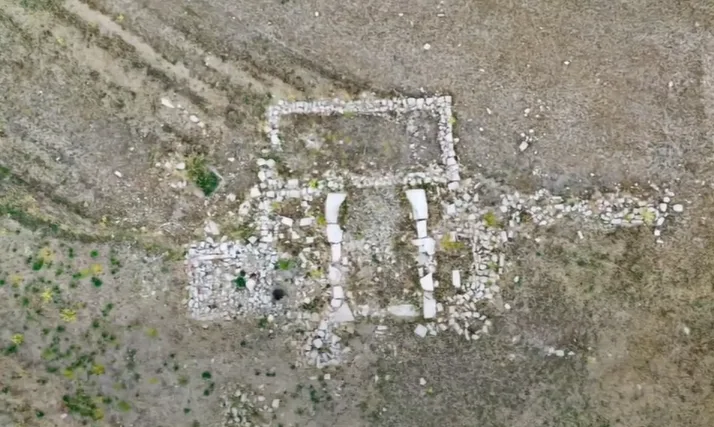
Utah drought leads to re-appearance of ghost town
Aerial footage of the town was captured earlier this month.
Water levels are low in Utah, following a dry summer and a worsening drought situation. The conditions have exposed previously-covered land, revealing relics of the past.
At the Rockport Reservoir for example, water is about a quarter of its total capacity, and the foundations of an old town that once existed there have emerged.
The Town of Rockport was a European-American settlement in 1860. It was never large, reaching its peak at about 200 members. A history of the community, detailed by Utah State Parks, suggests it had a few names throughout its 110-year existence, including Crandall and Enoch City. In 1866, during the Black Hawk War, many inhabitants relocated to the settlement of Wanship, north of the present-day reservoir.
Some returned a year later, building a wall to prevent future conflict. The town was renamed again at that point, to Rock Fort. When the wall was taken down after the war in the 1870s it was renamed to Rockport.
About 27 families were living in the area when the federal government purchased the land create the reservoir in the 1950s. At that point, some buildings were moved offsite and preserved. The town's Coop and shool house were moved to a pioneer village and amusement park, and the chapel was relocated to a state campground.
"It was really interesting to be standing at an overlook for the reservoir and to see faint traces of foundations of old homes and a road all below where the water would normally be," Devon Dewey, a QA drone test pilot who captured images of the ghost town, told KSL.com.
"The whole area is pretty flat and uniform, so even though the foundations are old and mostly gone, you can still see them clearly if you know where to look.
Using a drone to get a higher perspective helped to see where structures once stood over 70 years ago."
While the land in the photos appears dry, officials say the ground is likely muddy and unstable after decades of being submerged in water - so it's best to observe artefacts revealed by the drought from afar.






